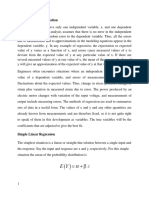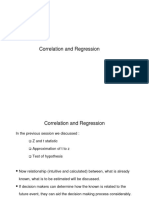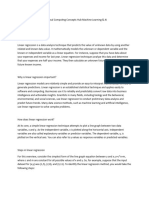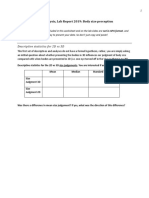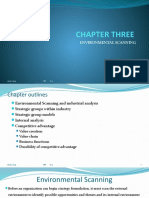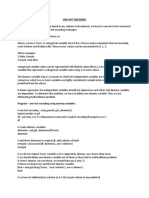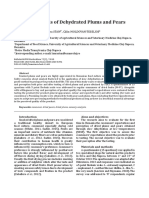0% found this document useful (0 votes)
8 views32 pagesRegression
The document provides an overview of regression analysis, including its definitions, types (logistic and linear), and advantages in predicting relationships between variables. It outlines the steps involved in performing regression analysis, such as calculating correlation coefficients and regression coefficients, along with an example involving water usage and tomato yield. Additionally, it discusses the significance of the regression line, sources of variation, and the interpretation of results in statistical software like SPSS.
Uploaded by
mais.nayefCopyright
© © All Rights Reserved
We take content rights seriously. If you suspect this is your content, claim it here.
Available Formats
Download as PPTX, PDF, TXT or read online on Scribd
0% found this document useful (0 votes)
8 views32 pagesRegression
The document provides an overview of regression analysis, including its definitions, types (logistic and linear), and advantages in predicting relationships between variables. It outlines the steps involved in performing regression analysis, such as calculating correlation coefficients and regression coefficients, along with an example involving water usage and tomato yield. Additionally, it discusses the significance of the regression line, sources of variation, and the interpretation of results in statistical software like SPSS.
Uploaded by
mais.nayefCopyright
© © All Rights Reserved
We take content rights seriously. If you suspect this is your content, claim it here.
Available Formats
Download as PPTX, PDF, TXT or read online on Scribd
/ 32
























